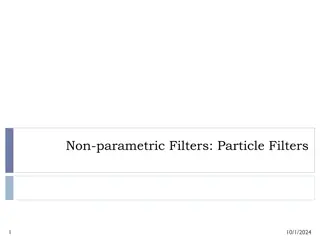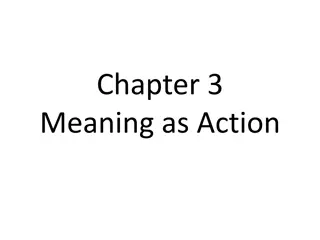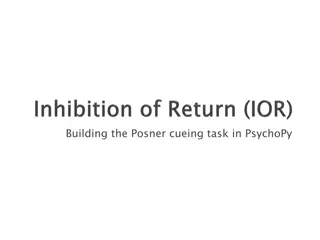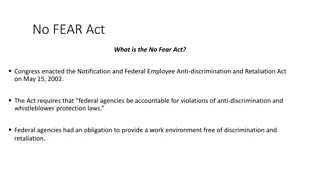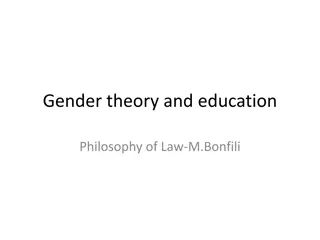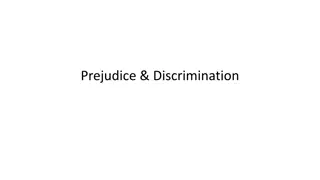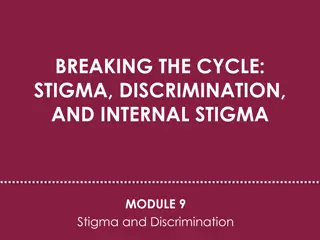Discrimination Training and Reweighting of Interaural Cues
This project focuses on discrimination training and reweighting of interaural level vs. time difference cues in normal-hearing listeners for sound localization. It explores the dominant cues at different frequencies and factors influencing binaural cue weighting. The study aims to reweight these cues using a simpler left/right discrimination task without the need for sophisticated equipment like VR headsets. The methods involve training groups with feedback congruent with ILDs or ITDs and a no-training control group, using auditory stimuli and testing over three consecutive days.
Download Presentation

Please find below an Image/Link to download the presentation.
The content on the website is provided AS IS for your information and personal use only. It may not be sold, licensed, or shared on other websites without obtaining consent from the author. Download presentation by click this link. If you encounter any issues during the download, it is possible that the publisher has removed the file from their server.
E N D
Presentation Transcript
Discrimination Training and Reweighting of Interaural Level vs. Time Difference Cues Udbhav Singhal1 , Maike Klingel 1,2 , Norbert Kop o1 1 Institute of Computer Science, P. J. af rik University , 2 University of Vienna This project is a continuation of the work supported by WTZ grant ASH (Adaptability in Spatial Hearing), #MULT 07/2020, APVV DS-FR-19-0025 and VEGA 1/0350/22, 2022-24.
Background Normal-hearing (NH) listerners rely on two bineaural cues for sound locatization in horizontal plane: - Interaural Time diference (ITD) results from difference in the travel time from a sound source to the ears to and farther from the source. They are dominant at low frequency (upto 1.5 kHz). - Interaural Level Difference (ILD) where the sound is coming from the right side of your body is more intense at your right ear then at your left ear. They are dominant for higher frequency.
Backgraound NH listeners weight binaural localizatio cues based on the sound s frequency (Macpherson & Middlebrooks, 2002) Many other factors which influencing binaural- cue weighting: - Overall Level(Deatherage & Hirsh, 1959) - Active manipulation of one of the cues(Lang &Buchner, 2008) - Room Acoustics (Rakerd &Hartmann, 2010) Studies attempting to induce a change in binaural cue weighting produced mixed results: - No reweighting effect (Jeffress & McFaddeen, 1971) - ILD weights increased, but ITD weights did not(Kumpik et al, 2019) - Reweighting induced in both directions (Klingle, Kopco & Laback)
Aim This study propose simpler reweighting the cues using left/right discrimination task which further don t require sophisticated equipment (VR headset).
Methods Three groups: Training group (n = 10): Feedback congruent with ILDs (Data as collected during Maike study) Training group (n = 14): Feedback congruent with ITDs No-training control group (n = 11) (Data as collected during Maike study) Auditory stimuli: Narrow-band noise bursts (2-4 kHz) Independent combinations of ITDs and ILDs Testing on 3 consecutive days: Day1: Pretest (both groups) + 1st training session (training group only) Day 2: 2nd training session (training group only) Day 3: 3rd training session (training group only) + Posttest (both groups) Two-interval, 2AFC left/right discrimination task Pre-/Posttest: Constant Stimuli Training: 2 down 1 up adaptive staircase procedure
Methods Pre-/Posttest 1st stimulus
Methods Pre-/Posttest 2nd stimulus
Methods - Training 1st stimulus
Methods - Training 2nd stimulus
Task - Training Figure: Experimental procedure. During the assessment, only the first screen was shown and no feedback was given. During pre-training and training, feedback was given after each response and if response was in-correct the stimulus pair was repated with the correct response shown on screen (green), the subject has to respond correctly.* *https://pcl.upjs.sk/wp-content/uploads/2020/03/FAMaike000108.pdf
Results Figure: Ratio of trails in which responses followed the azimuth as a fuction of the mean of az1 and az2 plotted separately for different az1-az2 cue disparities. The error bars shows the standard of the mean.
Results Responses followed the ILD azimuth significantly more often in the posttest than in the pretest for the ILD training group. The effect of training was much weaker and not significant in the ITD training group, and no effect was observed in the control group. The relative weight varied with target location and spatial disparity, the increased ILD weight in the ILD group was independent of these spatial factors. Conclusion The reason for this asymmetry could be that the study was performed in virtual anechoic environment in which the ITD weight is already maximized as the ITDs are not distorted by reverberation in this environment.






